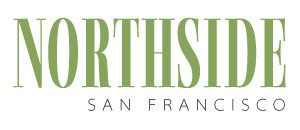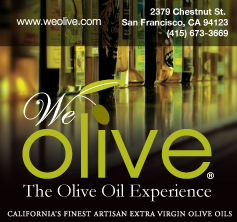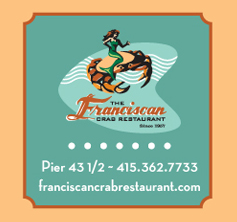What’s the oldest profession in the world? Maybe it is what you’re thinking, but it could just as easily be wine. After all, it is believed that the first wine ever made was during the Stone Ages, and what a valuable a commodity that must have been – who wouldn’t want to crack open a bottle after a long day of inventing tools?
Since then, males have almost exclusively dominated the wine industry. A formidable change has come during the last 30 years, and although the industry does remain predominantly “manly,” women are now unquestionably some of the biggest and brightest players in the field from sommelier to winemaker to winery owner.
Today, there are about a dozen wineries wholly owned by women in Napa and Sonoma counties. It’s not a huge number considering there are roughly 3,000 wineries in the area, but it’s nothing to sniff at either. Several of these wineries are the most highly respected and acclaimed producers of premium wines in the world.
Take Carol Shelton, a veritable Zin master. She is both winemaker and co-owner of Sonoma county-based Carol Shelton Winery and has received the title of Most Awarded Winemaker in America for 12 of the last 15 years and Winemaker of the Year four times. “People say that it has taken such a long time for women to have come into their own in the wine industry, but women were making wine all along and just never got the credit for it,” Shelton says. “Even during the seventies, a lot of women were producing great wine, but only a handful got any credit for that – like Zelma Long [Vilafonte Winery], Merry Edwards [Merry Edwards Winery], and Mary Ann Graf [first female winemaker to graduate from UC Davis]. I think that in many fields, there has always been a ‘woman behind the man.’ The truth is that the guy who goes on the road and is the figurehead for a winery isn’t always the winemaker.”
Shelton encountered discrimination early in her career. “When I graduated, women weren’t allowed to work in the cellar,” she says. “They weren’t considered strong enough, but I’ve done all of those things since then – hauling hoses, picking up pumps, moving wine, shoveling a tankful of grapes – and yes, it’s brutal, but a woman can do it. There was also this myth that women could carry yeast infections and give it to the wine. I think that was a way to keep women out of the bottling room as well.”
Merry Edwards, one of the first female winemakers and producer of award-winning Pinot Noirs in the Russian River Valley, certainly endured her share of gender bias, too. “Prejudice runs deep,” says Edwards. “I experienced discrimination issues when attempting to get my first job and even after that. However, this was not always from men in the business, but [from] their wives who did not want a young woman working with their husband.” She adds, “I actually don’t feel that much has changed.”
It’s hard to imagine a child who dreams of growing up to be a winemaker, and Carol Shelton wasn’t one of them. By age 10, she had decided she would be a paleontologist to the astonishment of her parents and friends, both of whom had absolutely no idea what that meant. By high school, she had changed her mind and decided to become a poet.
Nevertheless, Shelton entered UC Davis undeclared. After a tour of Sebastiani Wineries during her freshman year, she finally discovered her life’s course: “When I stepped into the barrel room of Sebastiani that day, I took a deep sniff and said, ‘Gosh! I want to smell this for the rest of my life!’”
No doubt, Shelton’s mother played a huge part in that revelation. “When I was about 6, I always lost at games I played with my older sisters, so my mom created a game just for me. She would take all the herbs, wrap them in tin foil and say, ‘OK, identify them.’ That was the only game I always won. My mom had no idea what she was doing at the time, but she was building sensory memory,” Shelton recalls.
Like Edwards, Shelton was one of the first women to graduate in enology from Davis. She went on to work at several wineries, her last stint lasting 19 years as winemaker at a midsized winery in Sonoma County where underappreciation spurred her to move on. “Management was pretty male dominated and not supportive of my work. I won so many medals at competitions, but that just made my boss furious,” she says. “When we won the Golden Winery Award from the state fair in 1996 – one of the awards I am most proud of – I came back to the office with my little trophy and the president had sent flowers to my boss. I was like, ‘Wait! I made these wines!’”
Shelton slumped home to husband Mitch, sobbing, but he saw it as an opportunity. He had been pushing her to start her own winery for 10 years. “I needed a good kick in the butt,” she says.
So was she scared? “I was petrified.” she says. “My parents, who ran their own travel agency, said, ‘You’re crazy to run your own business – don’t do it!’” But Shelton and her husband were determined to make it work.
In 2000, they launched her highly touted, internationally acclaimed winery, producing 5,000 cases of Zinfandel annually. Even after attaining such a high level of success, however, gender bias remains. “I go to seminars for winery owners and they still don’t acknowledge that I’m a winery owner. I am still just ‘that girl in the lab.’ It’s hard to be taken seriously, even after 11 years,” says Shelton.
Still, there are no sour grapes from either Shelton or Edwards. Both agree that women have natural strengths and abilities that give them an edge, such as more taste buds per square inch and possibly a better nose. “Women are also socially trained to be receptive to their senses and to trust their intuition – important skills, especially during the high pressure harvest season,” says Edwards.
“Think back to the cavemen days: women were the gatherers,” says Shelton. “They developed a better sense of taste and smell in order to make sure their family wouldn’t be poisoned. And they were more intuitive about what goes together to make things taste good.”
Being attuned to your emotions also helps, says Shelton. “I think that’s what sets my wines apart – you can really taste the difference when you put the love in it.”
Because women are statistically the biggest wine buyers, perhaps being a female winery owner also helps sales. “Being a woman helps one stand out from the crowd and consistently pursuing excellence gets everyone’s attention,” says Edwards. However, Shelton hasn’t found that it increases sales, noting that women generally purchase lower-priced wines. She also doesn’t believe that the extra press influences consumers, because “it’s the taste that ultimately matters.”
So what is the biggest myth about being a female winery owner? “That it’s romantic,” says Edwards, or glamorous, according to Shelton. Both of them wear more hats than a baseball team.
“I top the barrels, deal with bottling, labels, accounting, come up with blends, manage the winery, as well as create wines and market them. I write the newsletter, and I am the face for the public, spending a lot of time away from Mitch and my dogs. I also do the vineyard sampling, slogging a five-gallon bucket up and down hills and then crushing the grapes. You know, your hands get really sore doing that!” says Shelton, laughing.
But there is another prevailing myth about winery owners, says Shelton. “Everyone thinks we’re all rich, but not many wineries make money.” She adds, “We’re not in it for the money. We are in it for the love of it.”
And we can taste it.
Sandy Fertman Ryan has written extensively for several women’s magazines and virtually all of the national teen magazines, including Teen, Seventeen, Sassy, CosmoGirl, YM, and Girls’ Life. She is currently trying to grow up.
Behind the Vine:
Women who own wineries
Women who own wineries








